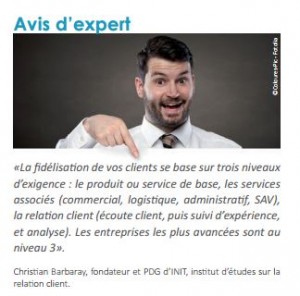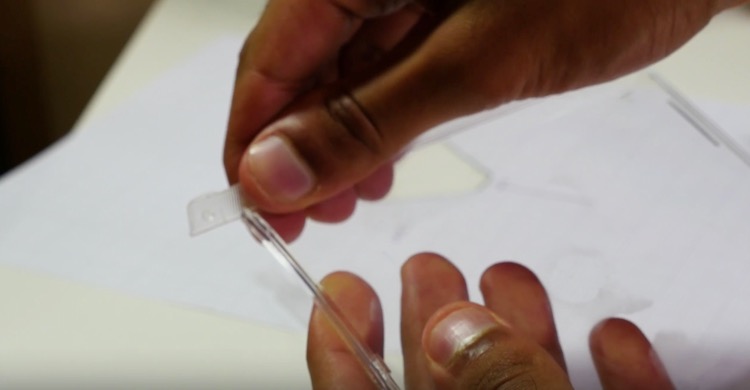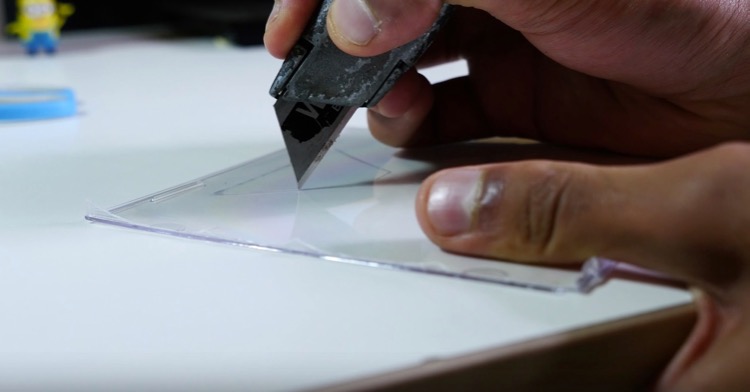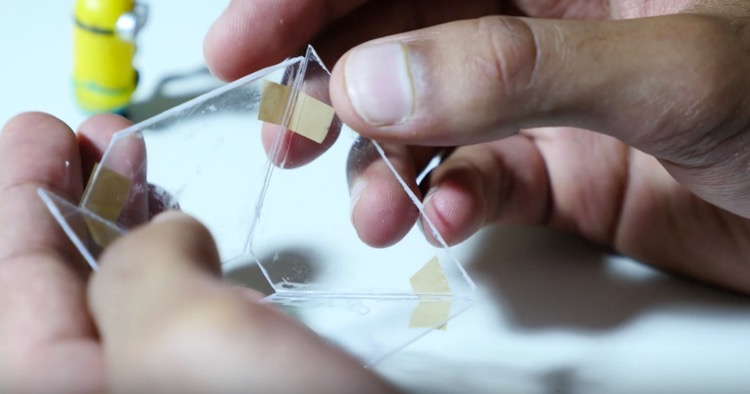

2015 has been jam-packed with kick-ass food events so far, and there are lots of awesome conferences, summits, Meetups and more on the horizon. Here are our top picks for kick-ass food gatherings happening this fall. Let us know if there are any we missed in the comments below, and we’ll add them to the list.
_______________

August 20 – New York, New York
Join us at Force Brands this Thursday (8.20) to hear failure stories from Culinary Agents, Quinciple, WTRMLN WTR, Super Sprowtz and The 86 Company. Plus snacks from food260, Pure Genius Provisions and Legally Addictive Foods, drinks from The 86 Co. and networking. RSVP here.
September 9 – Brooklyn, New York
Join us at Slow Food NYC’s annual fundraiser at the Wythe Hotel in Williamsburg, Brooklyn. This year, Slow Food NYCSlow Food NYC honors restaurateur Andrew Tarlow with its “Snailblazer” award, a designation granted to those leaders in the farm-to-table movement committed to a local, sustainable food system. Proceeds support Slow Food’s work with 16 NYC schools that are teaching kids about good, clean, fair food.

September 10 – New York, New York
Technology is rapidly transforming the hospitality industry. The Techtable Summit will bring together leaders from both industries to address this shifting landscape and work towards building better tools that drive towards shared solutions. Apply to pitch at the Startup Showcase or purchase tickets here.

September 12-13 – Rensselaerville, New York
This annual gathering is the Woodstock of food—an intense, weekend symposium designed to raise the bar on how food stories are told and to connect generations of food-inspired artists, writers, web producers, documentary filmmakers, and broadcasters. This year, LongHouse will delve into Chinese American food culture with a series of unexpected stories, presentations and performances.

September 12-13 – Brooklyn, New York & October 2 – Chicago, Illinois
Taste Talks is a national series of festivals celebrating the future of taste through symposia, tastings, dinners and parties. Taste Talks brings together thought leaders and luminaries from around the world together with everyday food enthusiasts to engage in great conversation, amazing food and one-of-a-kind experiences. A part of the Brooklyn Taste Talks event,The Future Food Expo brings food tech startups, innovative food producers, media companies and non-profits together to showcase their work to thousands of food influencers, enthusiasts and media.

September 21, 2015
Join Foodstand and Slow Money NYC for its monthly event series. Food entrepreneurs and innovators showcase their products or businesses to a diverse panel of experts and audience collaborators, followed by networking, snacks and drinks.

September 22 – Austin, Texas
Hosted by Food+City (formerly known as the Food Lab at the University of Texas at Austin), this event features startups showcasing their product samples, networking and a panel comprised of a range of industry experts who will lead the conversation about Austin’s potential to be a hotbed for food entrepreneurship. Topics include venture capital, startups, urban design and government organization. Appetizers and a cash bar are available. Also, check out Food+City’s other upcoming events here.

September 29 – Berlin, Germany
As part of Berlin Food Week, this event will bring together large food manufacturers, established food industry players and young food startups to collaborate, learn from each other and collectively innovate the food landscape.

September 30 – New York, New York
MOFAD’S Roundtable program brings together top experts and advocates to debate hot food issues. The next debate takes on the controversial role of industrial technology in the food system.

October 1 – New York, New York
Are insects, cultured meat and meal replacement powders the key to building a better food future? Decide for yourself at this month’s Food+Tech Meetup. Presenters include Exo, New Harvest, Sani and Splendid Spoon. Learn from protein pioneers and network with the food innovation community over protein-packed snacks and drinks.

October 2-4 – San Francisco, California
The inaugural conference will bring together food innovators, entrepreneurs, chefs, executives, food and beverage producers, farmers, technologists, global brands, investors, and journalists to celebrate and explore novel ideas, showcase amazing food products, and discuss how food innovation can help improve the food system.

October 5 – New York, New York
This is Just Food’s eighth annual local food tasting benefit. New York City’s best chefs who have pioneered and continue to lead the farm-to-table movement will offer innovative, seasonal fare. The benefit also in
cludes tastings from New York’s sustainable wineries and breweries, signature cocktails by local distilleries, and a VIP oyster and cocktail hour.

October 16-23 – London, England
For one week, food tech related events are taking over the best venues in central London. London Food Tech Week features a Food & AgTech Hackathon, a TEDxHackney Future of Food, panel discussions, workshops and more.

October 16 – New York, New York
Presented by NYCWFF, this conference brings together noted business and tech leaders, top investors and hot entrepreneurs from inside and outside the restaurant industry for a day of conversation about the business of food. Panelists include Dan Barber and Ben Leventhal. This event is by invitation only. But you can enter to pitch your concept at the event’s Foodi Challenge, judges include Martha Stewart and Tyler Florence.
October 17 – New York, New York
Hosted by the New York Academy of Medicine, this event will celebrate the intersection between food, history, and public health. Eating Through Time brings together chefs, historians, writers, and public health experts to discuss the past, present, and future of food in society, culture, and policy. Food+Tech Connect will be moderating a panel on nutrition tech innovation with Ingredient1, Nima Sensor and AOBiome.

October 18 – Maastricht, the Netherlands
The first of its kind, this symposium is being held in association with Maastricht University, New Harvest and Brightlands Maastricht Health Campus. It will explore the many facets of tissue engineering for food. Young scientists from the fields of large scale cell production, biomaterials, cell biology, food technology, 3D tissue manufacturing and food behavioral science are encouraged to submit abstracts.

October 19-20 – New York, New York
Building on last year’s theme of prescriptions for a healthier America, Rethinking the Future of Food will look at what’s to come through three lenses: the future of the farm, the future of the kitchen, and the future of health. Presenters include NASA’s Chief Data Scientist, MOMA’s Chief Design Curator, the creator of Modernist Cuisine, FoodCorps Service Members and many more.

October 20-21 -Stone Barns – Pocantico Hills, New York
The second annual New York Times Food for Tomorrow conference, featuring Mark Bittman, Paul Krugman, Sam Sifton and Kim Severson, will explore how we can create an America food policy. The conference will touch on topics including: the changing face of farming, discovering the new fast food, the importance of school lunches and creating strategies to encourage more home cooking.

October 27-28 – San Diego, California
Hosted by the National Restaurant Association and featuring an agenda of compelling solo presentations from innovative leaders in the industry, the Restaurant Innovation Summit will bring together curious restaurant professionals and decision-makers from finance, marketing, IT, operations and related disciplines.

November 5 – Seattle, Washington
Entrepreneurs with the next great idea in the connected kitchen will have the chance pitch their concept, product and company to the leading voices in the IoT and connected kitchen hardware community. Winners will get engineering and business mentorship from both Highway1 and Lemnos Labs, two of most respected hardware incubators in Silicon Valley.

November 6-8 -Napa Valley, California
reThink Food, a unique collaboration between The Culinary Institute of America and MIT Media Lab, brings together a diverse group of thought leaders and innovators at the intersection of technology, behavior, design, and food. Its mission is to explore how areas such as big data, social networking, mobile computing, behavioral economics, marketing, neuroscience, agriculture, and culinary insight and strategy are radically changing food markets, systems, and our understanding of consumer choices.
Find this article valuable? Help us continue bringing you the news, insights and community you depend on by making a small contribution. Learn more HERE.

The post Must-Attend Food Events: Fall 2015 Edition appeared first on Food + Tech Connect.






























 Marianna Coronel is supporting the WFA’s Project Reconnect, which champions what’s good about marketing and showcases what impact it can have on the lives of the people we serve. It intends to raise the bar just a little in terms of some people’s perceptions of our industry.
Marianna Coronel is supporting the WFA’s Project Reconnect, which champions what’s good about marketing and showcases what impact it can have on the lives of the people we serve. It intends to raise the bar just a little in terms of some people’s perceptions of our industry.
















 Thanks to
Thanks to